Carbon Capture City
Maximum City Studio Project
Group Project with Haoda Zhao & Ziyao Jiang
The “Maximum City” is a new type of urban model designed from scratch. The built environment is exceedingly being reshaped through planetary scale technological interventions. In these ambiguous and borderless operations where data and material merge, it is no longer possible to differentiate between different scales of designed human experiences.
The boundaries of “inside” and “outside” are less certain, as architecture is expanded into ubiquitous systems and urbanisms of material and data.
Video recorded in scenes build by Unity

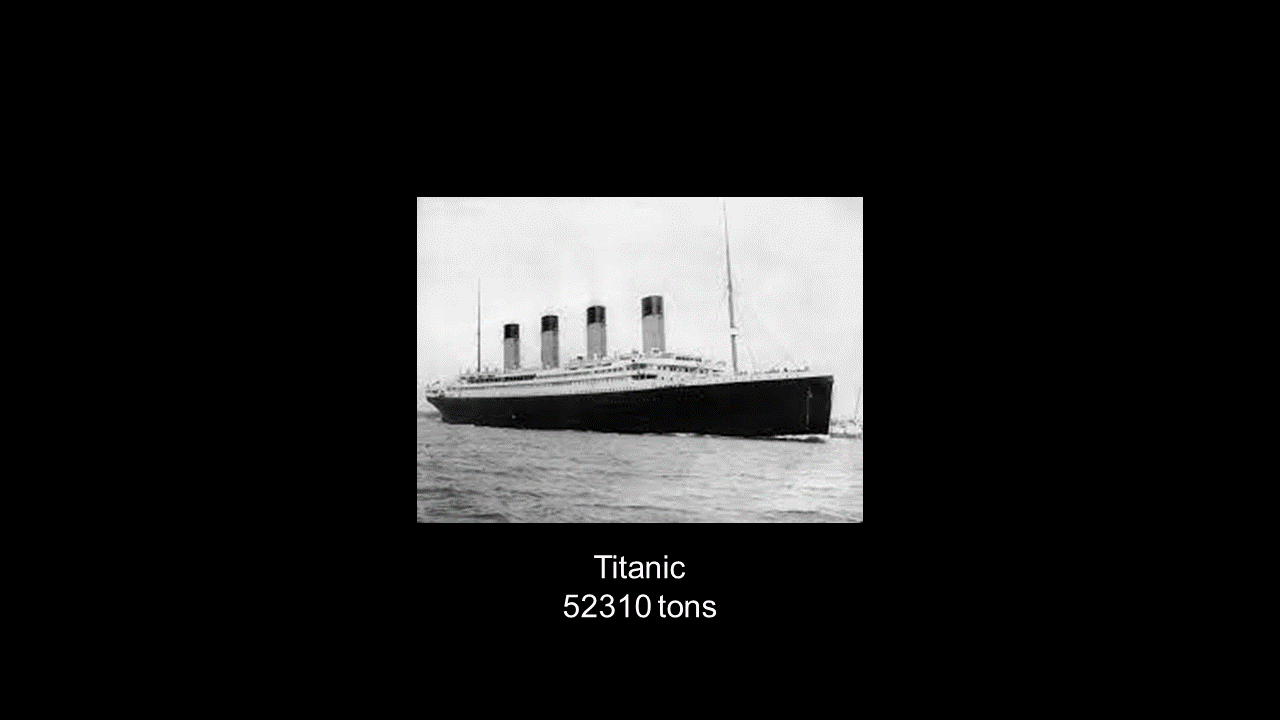
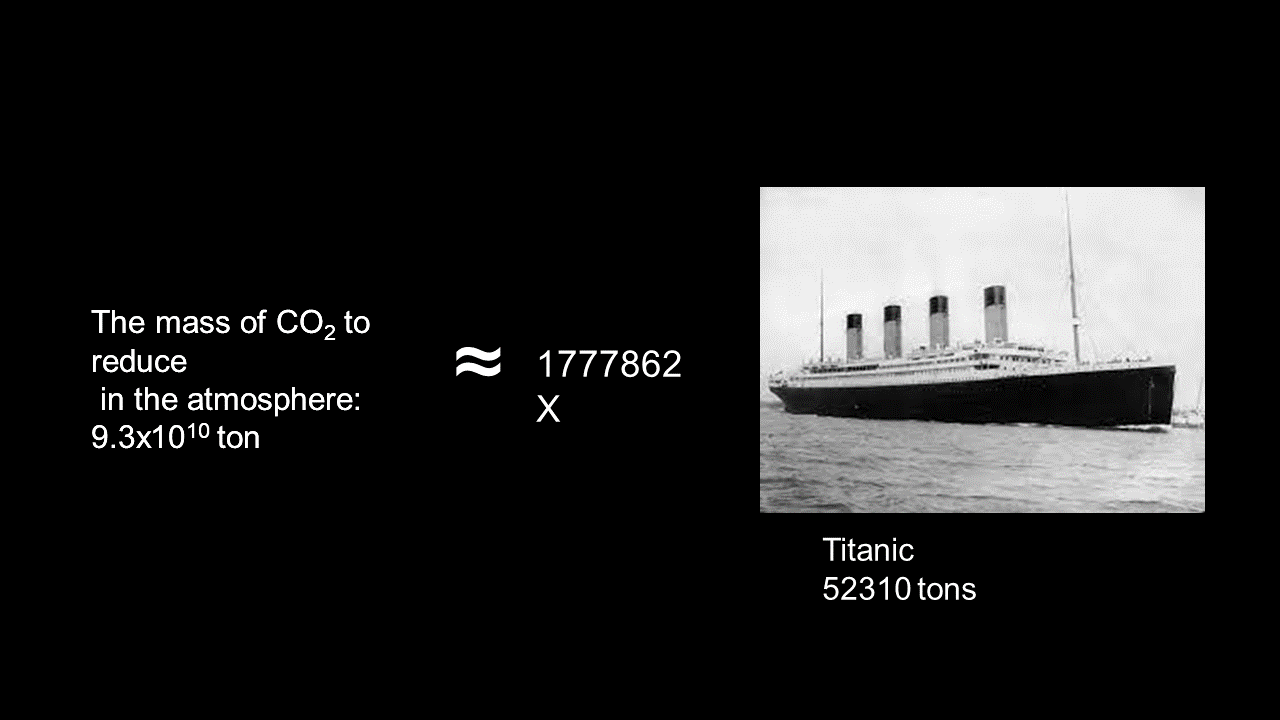
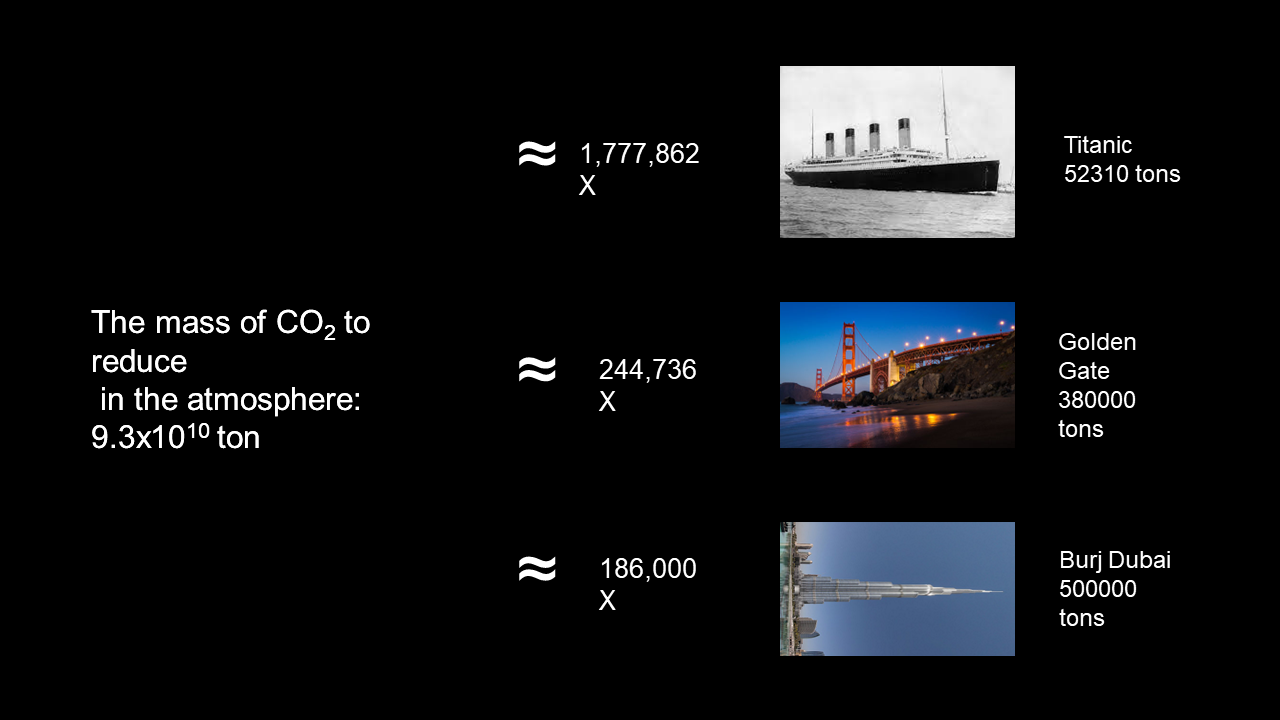



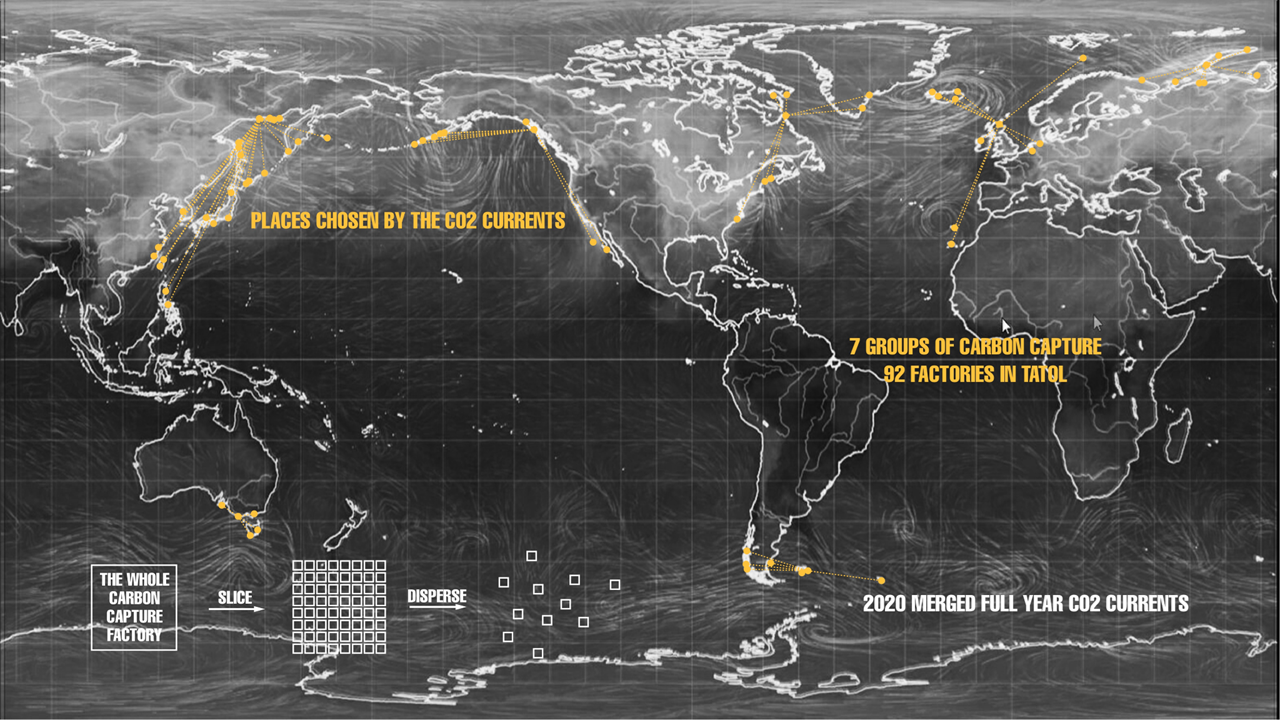
-What is Carbon Capture?
Carbon Capture is the process of capturing carbon dioxide (CO2) from the atmosphere. It uses a series of reactors and machines to absorb the air, distract CO2 from the air and then release the “clean” air back into the atmosphere. The distracted CO2 will then be sequestrated underground for centuries and millennia to reduce the amount of CO2 in the atmosphere. But to ensure the funding to support the sequestration, part of the CO2 will also be made into products such as soda drinks, carbon fiber, and jet fuel.
-Why do we need Carbon Capture?
Today we are way beyond the healthy line of CO2 amount in the atmosphere. The healthy line should stay around 0.028%, and today’s CO2 is about 0.042%, which is about 50% exceed the health line. This amount is increasing so fast as the consequence of overusing fuels, coals, etc., and it will continue to exceed even if we take some actions to reduce the usage of fuel. Planting trees will also barely help this situation because the amount is too large, and an existed Carbon Capture factory as big as a football court and do the work of 4,000 trees.
-How much effort do we need to fulfill the Paris Agreement?
The Paris Agreement is an international treaty on climate change. To reach the agreement, the mass of CO2 to reduce in the atmosphere is 9.3x1010 tons. To reach the agreement in 20 years, as for today’s technology, we will need 5 mega factories as big as a city (20 miles x 20 miles), spread into the most concentrated CO2 areas in the world. So, we take one of these places, Magadan in Russia, as a prefab to design, and then spread the new system out to the world.
-How can we revolve the Carbon Capture system, on a larger scale, to save the earth?
The Basic System: The existing system works on an architectural scale. It places the Direct Air Capture (DAC) units, the reactors, the injection wells, the product factories, and the power supplies, separately. We capture air from the atmosphere, then extract CO2 and release clean air back to the atmosphere. The main way to deal with CO2 is permanent sequestration, which can reduce CO2 directly. Other ways are CO2 products, which will release CO2 back to the atmosphere, but they can make money to support the sequestration. This works well on an architectural scale, but when comes to a much larger scale of a city-like factory, there are some parts we need to revolve.

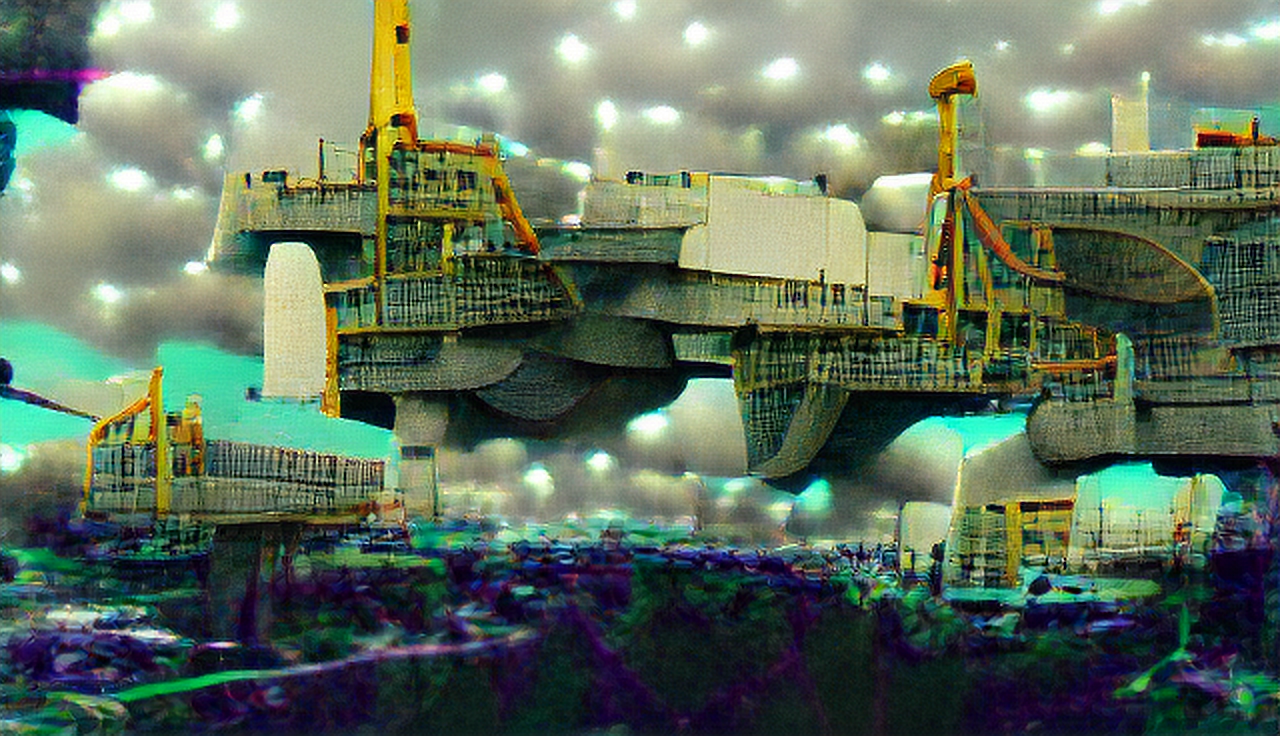
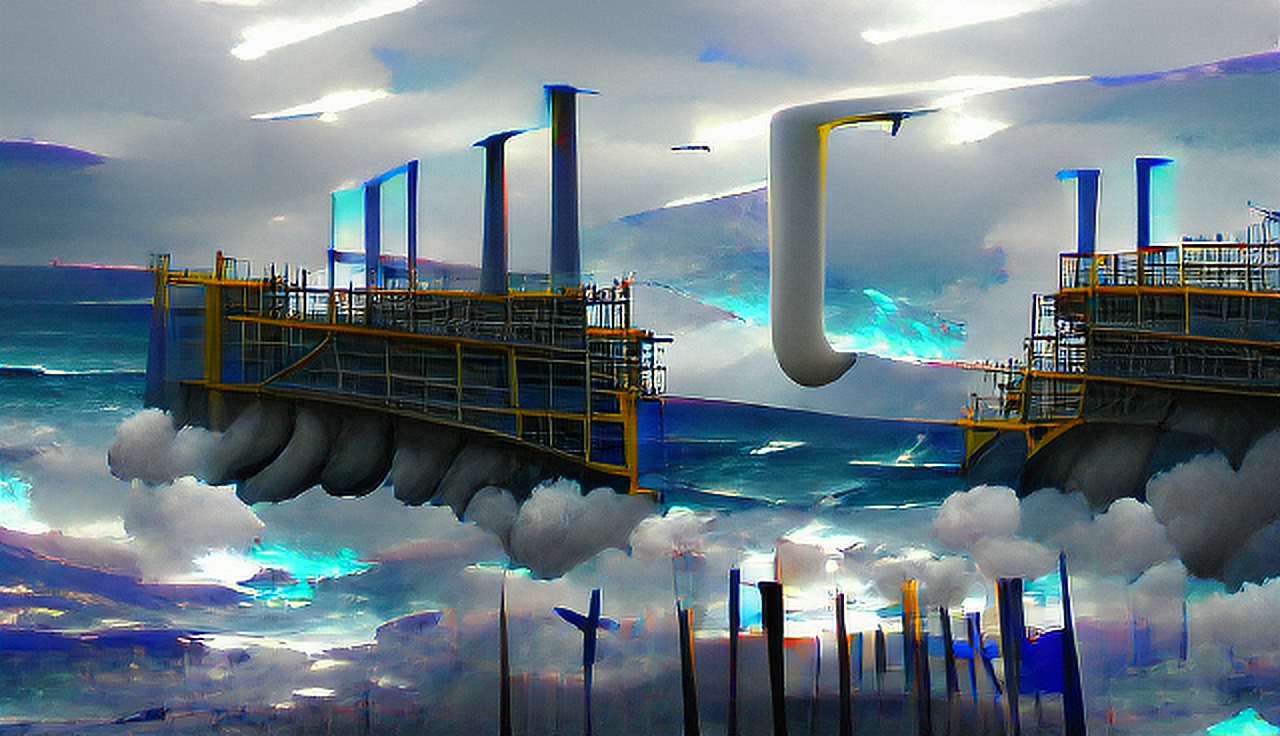
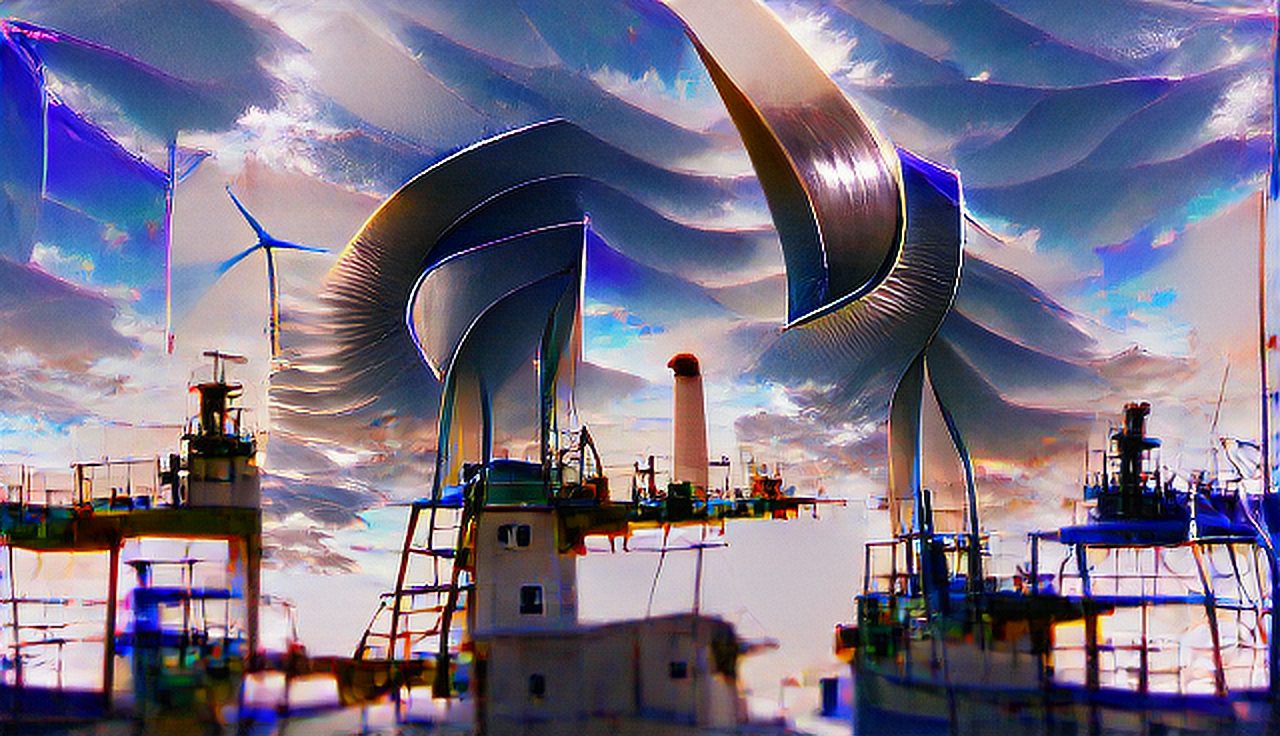
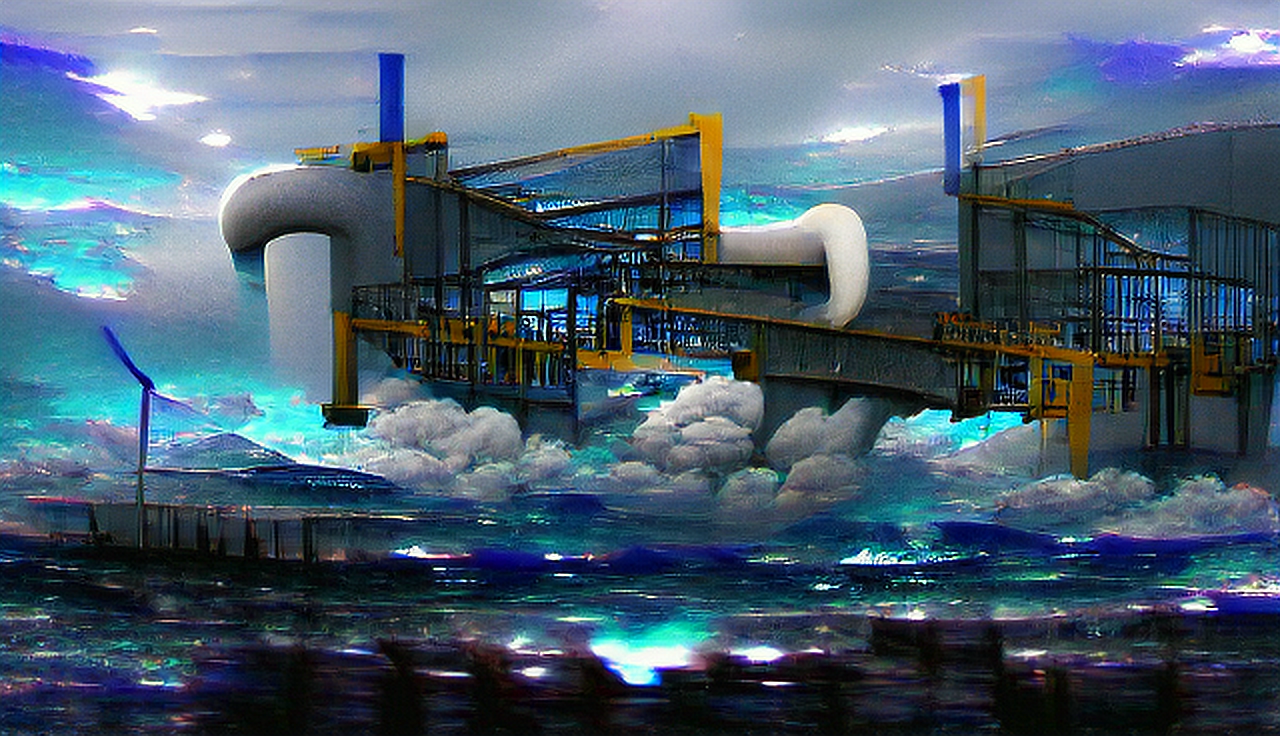
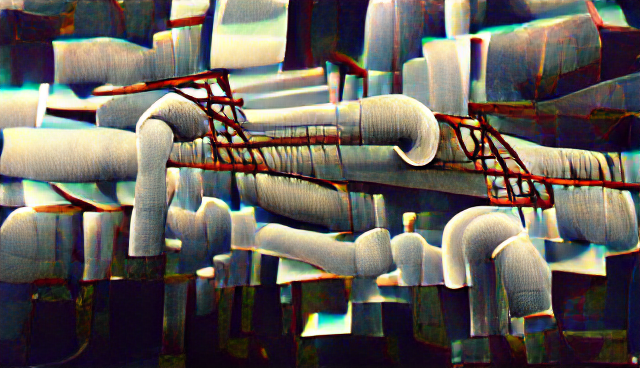
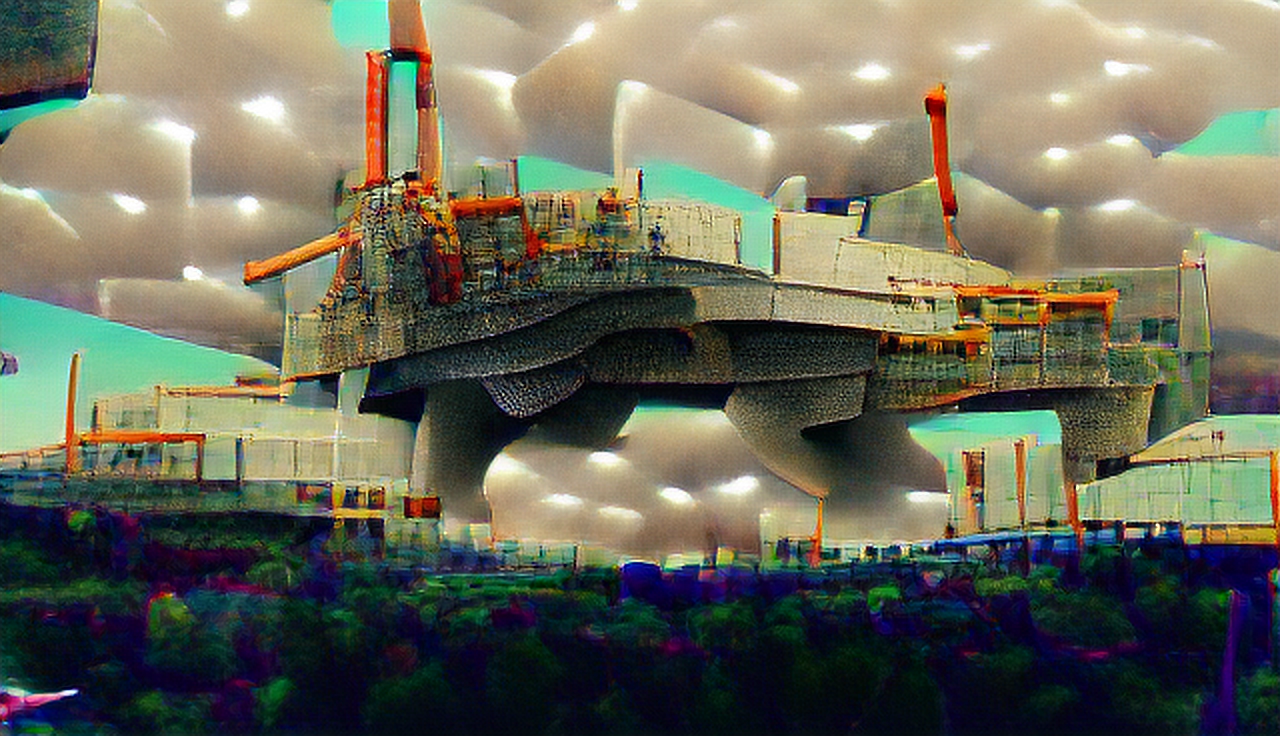
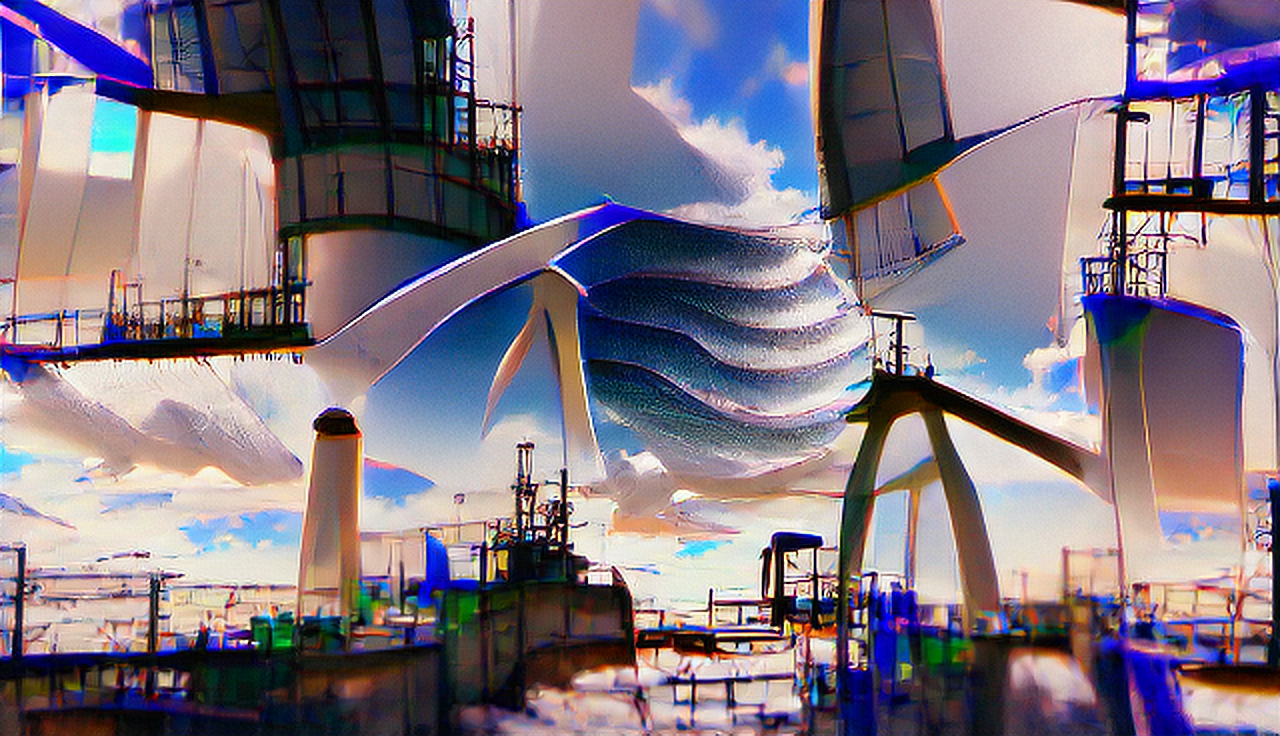
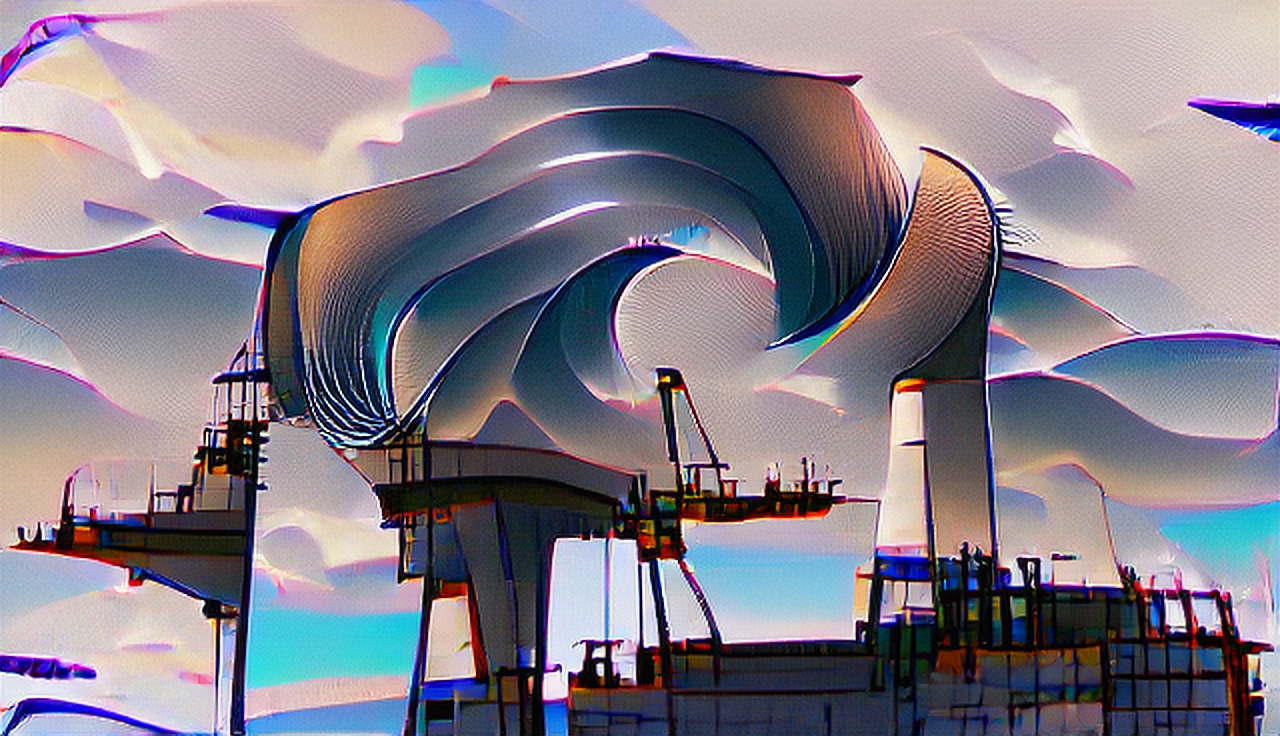

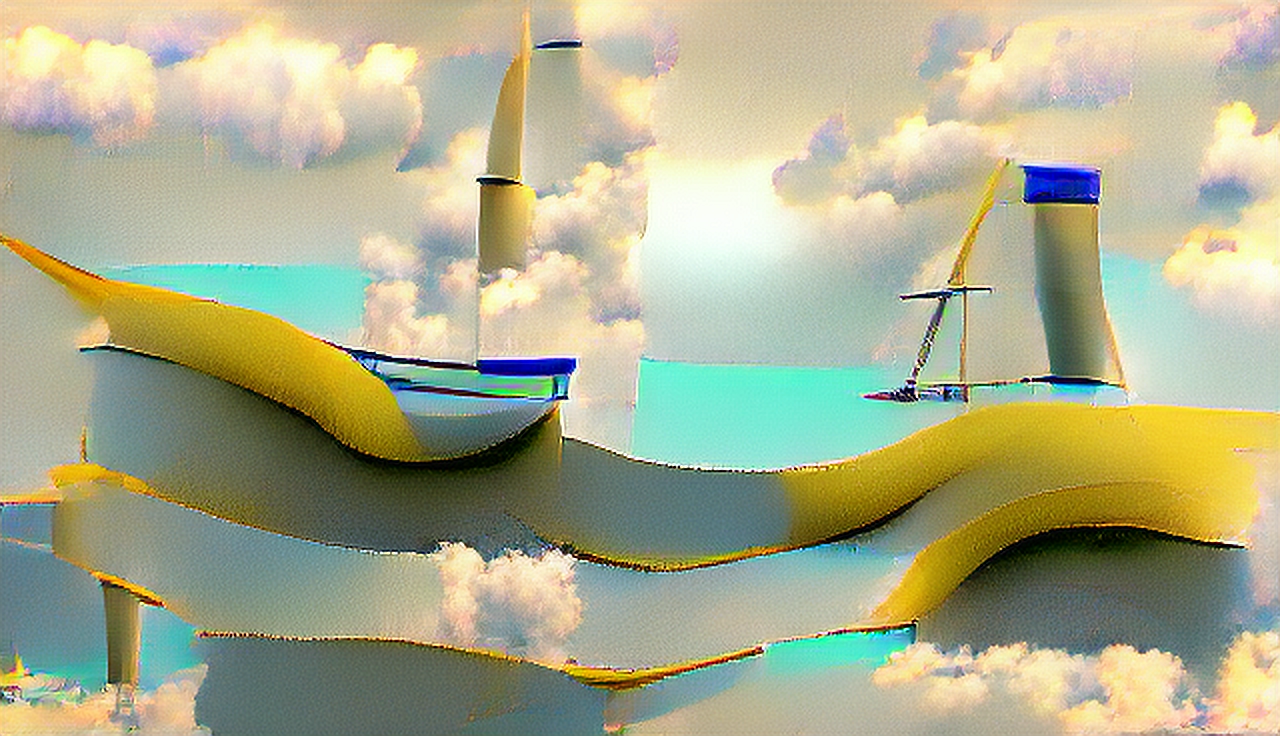
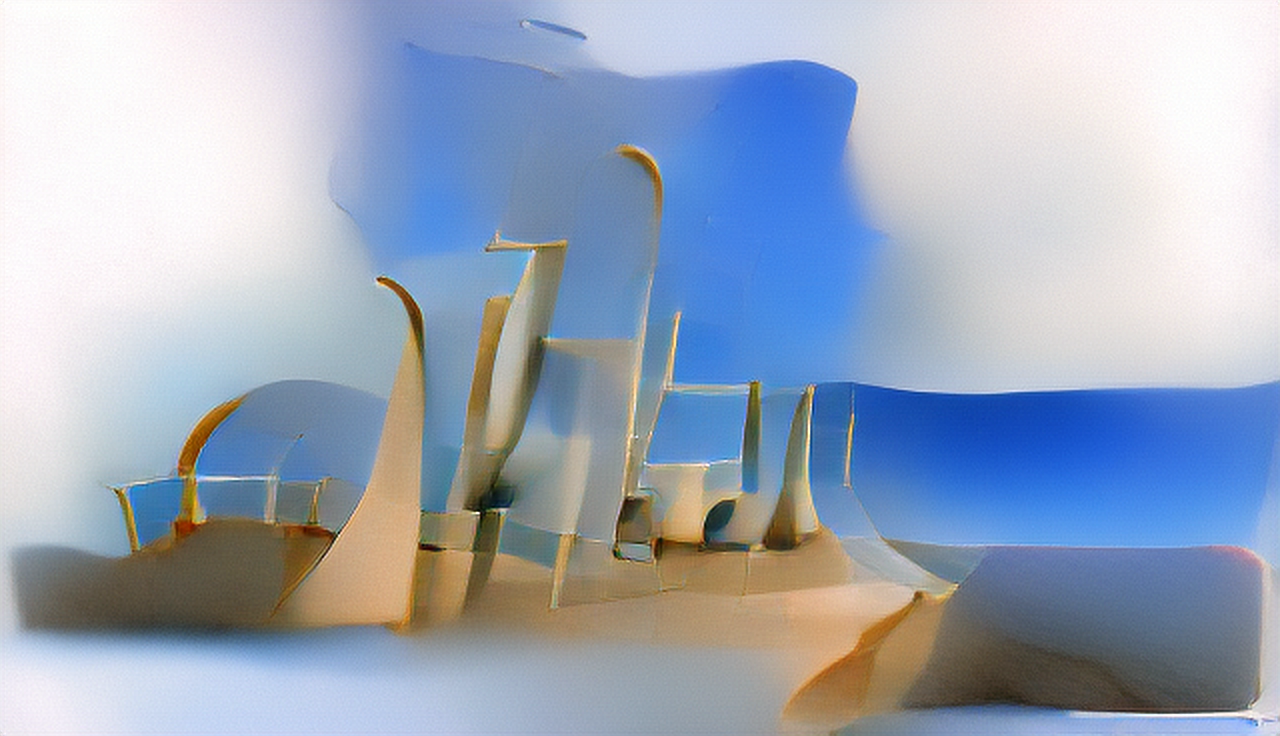


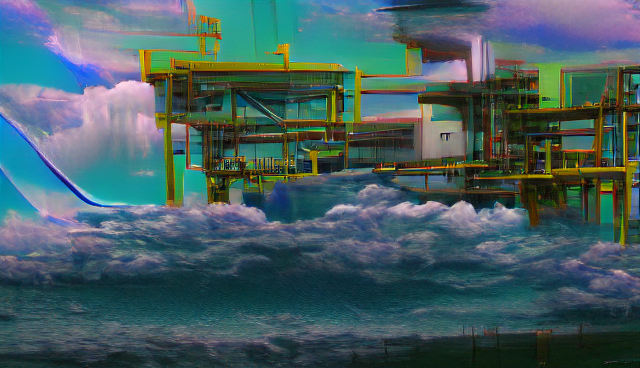
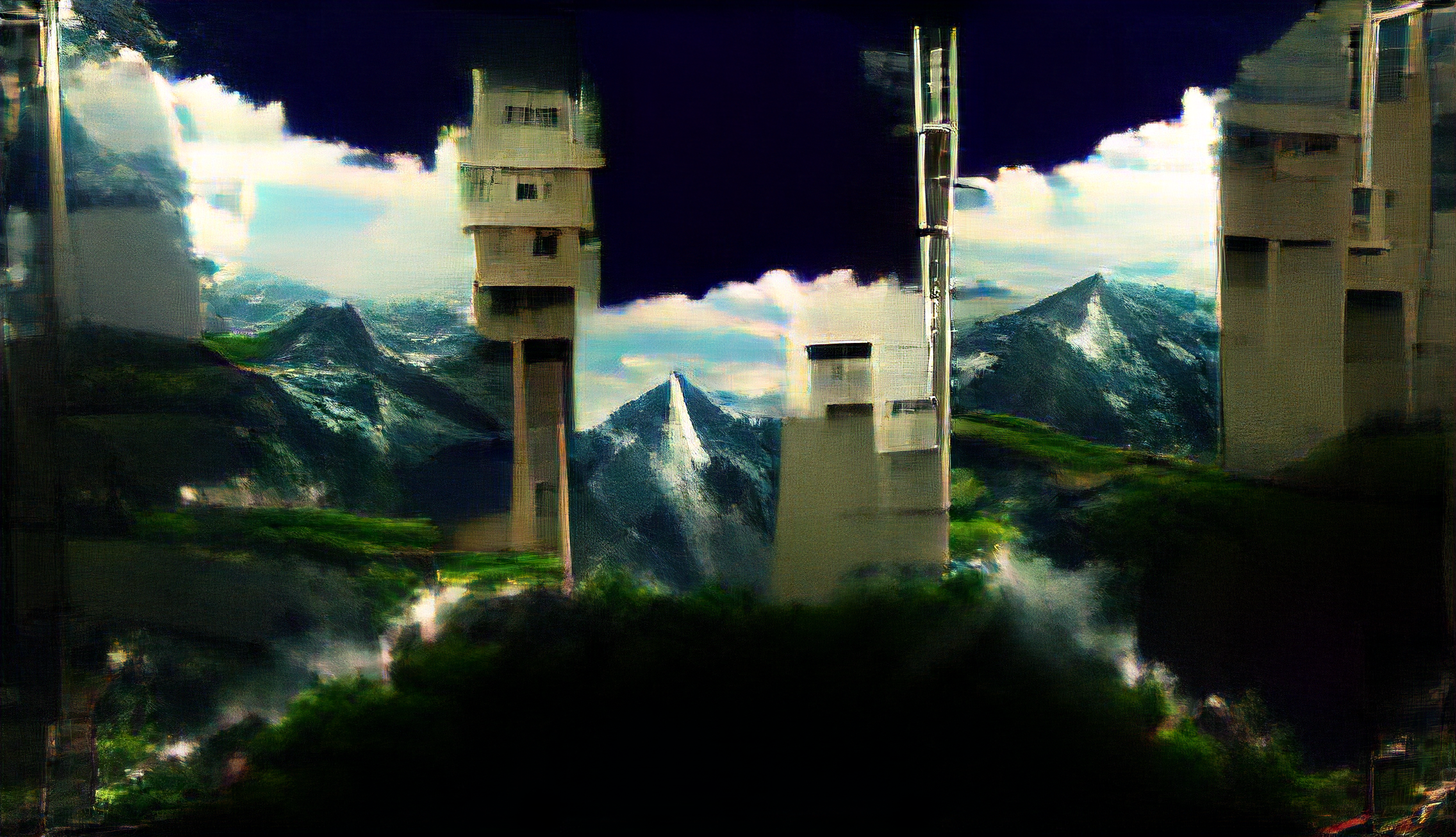

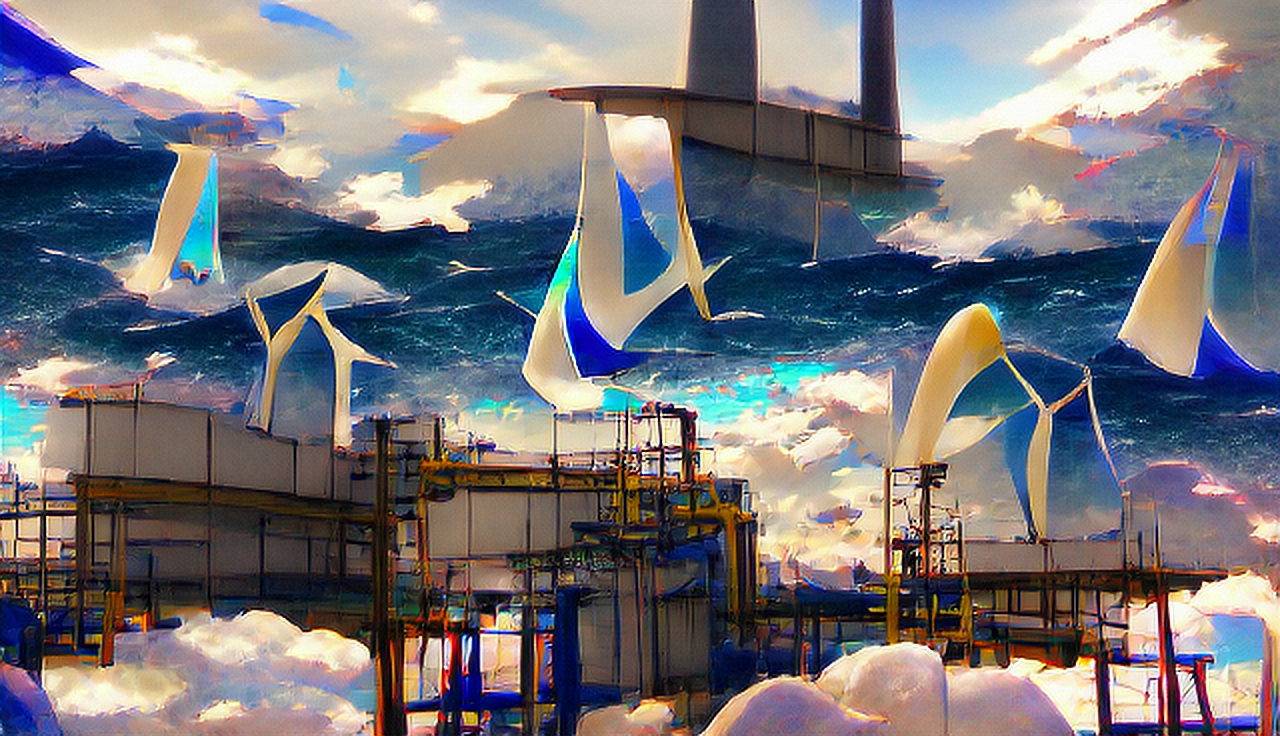

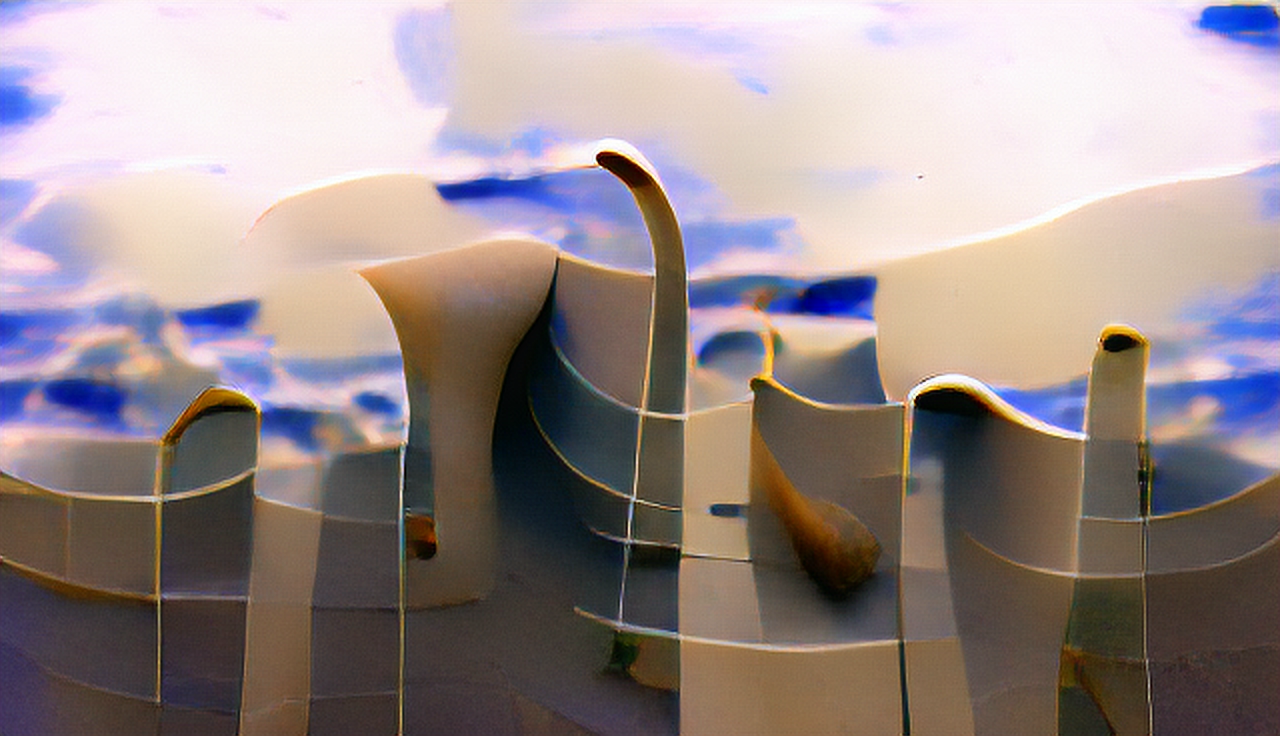
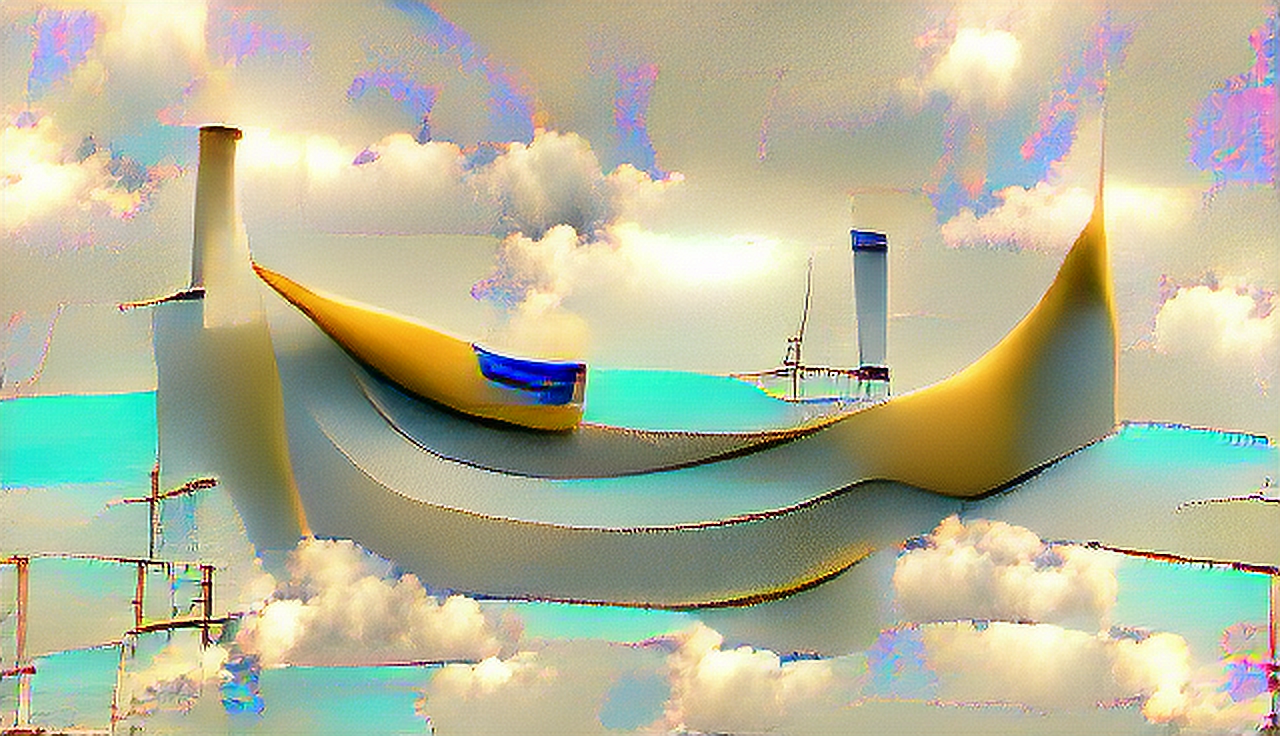
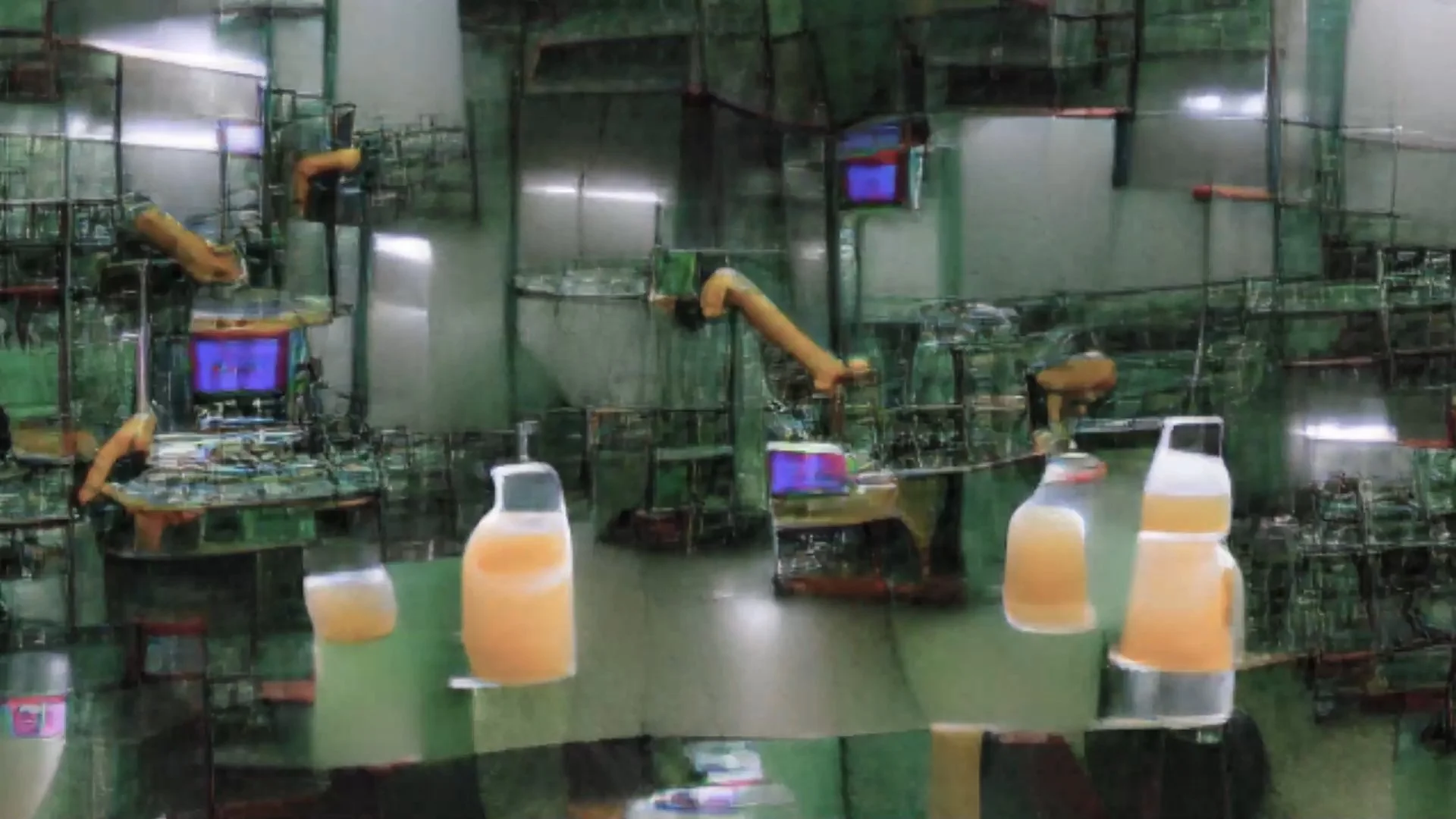

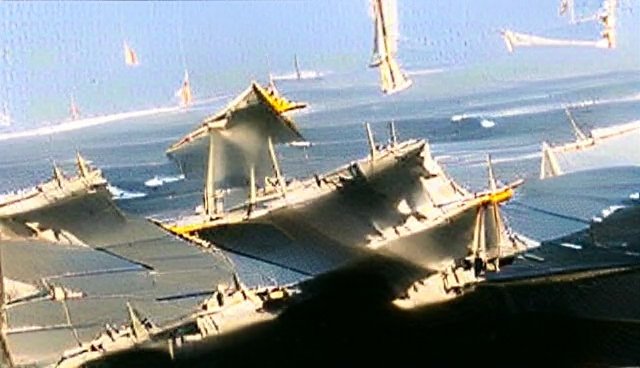
Through cycleGAN and VQGAN, we diligently work to tease out the implications that machine learning and machine vision have on design, aiming to design the new futures that are possible.
Managing the Airflows:
The directions of airflows in nature can bring up huge power. Because we are using wind turbines and engines to suck the air into the reactors, sucking air against the airflow can cost large energy waste. So, it is important that on a larger scale, the airflow direction is managed and under control. To reach this, we edit the landscape and terrain and make all our architecture merge into the terrain to create “hills” and “canyons” to guide the airflow in certain directions and go through certain points.
Creating the Wind:
But what if the wind level is more random in nature while we need more stable airflows for either power supply or direct air capture. This makes us reconsider the heat that generates in our system – from the power supply, the reactors, and any facilities that need a cooling system. The fact is the temperature difference can create wind. So, we decide to build the cooling system in our factory as a “climate maker” inland, and it comes up in the form of a reservoir, storing the hot water comes out from other cooling systems, and while cooling them down, continuously dragging the air from the seaside to go through all the “canyons” and DACs we build in the large system.
With both of these two systems, our cities will be able work successfully, continuously convert atmospheric CO2 into products or inject under ground.
With the site map generated by CycleGAN, we would like to utilize the whole site to maximize our carbon capture infrascture system.
Capture the CO2 → Purify the CO2 → Make use of CO2
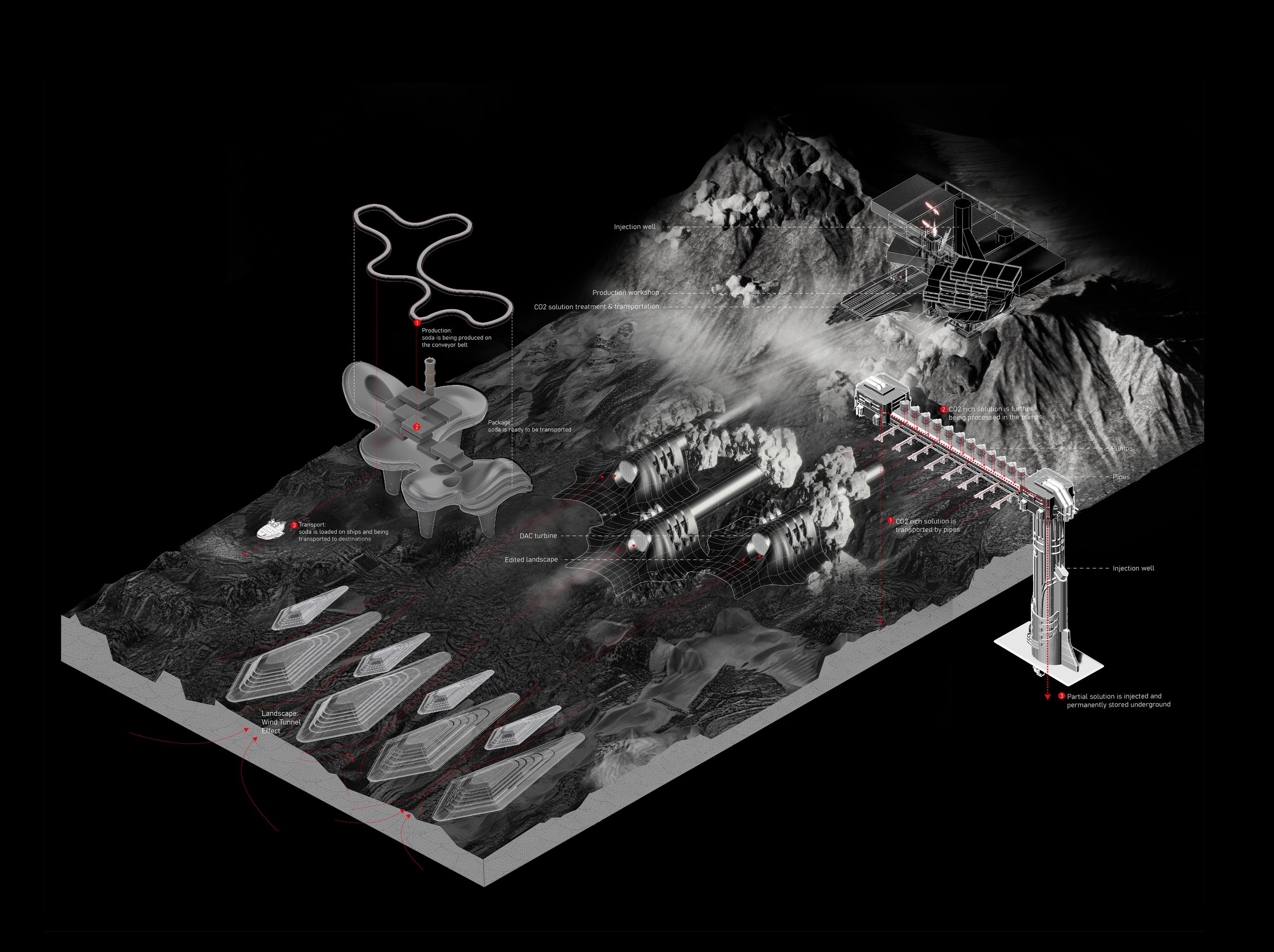
With building typology inspired by research result and VQGAN, We build the Carbon Capture city as shown in the video
-How can we showcase the Carbon Capture system, in a playful interactive way?
The AR part: In our AR interaction, when user approaches, the color plate will change and UIs will pop up explaining the functions of the models, and there will be wind blowing across the landscape and being managed by our system.
The VR part: In our first VR interaction, the user, as a newly onboard engineer, will enter a training room, the user will complete different training missions by watching videos and diagrams to gain information about the whole carbon capture system. After completing all the missions,the user recieves an alert that something went wrong, so the user accept the task to tackle the problem.
In the next scene,the user get in a truck to check out what is the problem, just like what the UI says. By pressing down the thumb stick, the truck moves forward. Firstly, starting with the landscape which manages the airflow, they are working just fine. Then, looking around, all the pumps are working well. Afterwards, the user can see that the mega factories are working well, but the DACs far away is not spinning as they should be, so the final task would be fixing the DACs.
In the last scene, the user will adjust the handle to maximize the efficiency of the DACs, and maintain the level of efficiency for sometime to fix the problem. Then mission complete, the user have successfully complete the first mission as a newly onboard engineer.
Through immersive experiences, we showcase our designs better with VR and AR interaction, and we will continue to build on the existing city.


















